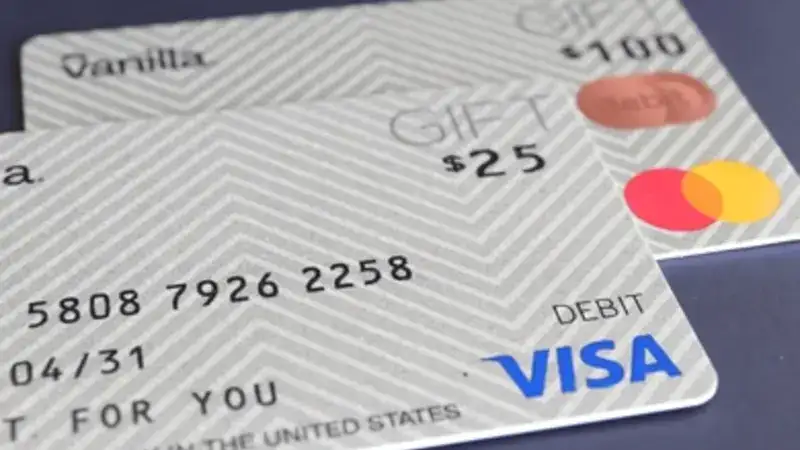Creating a custom-branded visa gift card for businesses represents a powerful marketing opportunity that extends your brand reach far beyond traditional advertising methods. Studies from the Promotional Products Association show that branded gift cards generate 70% higher brand recall rates compared to standard promotional items. These cards serve dual purposes – providing practical value to recipients while reinforcing your company’s visual identity every time they’re used. With modern design tools and streamlined production processes, businesses can create professional-quality branded cards that enhance customer relationships and drive brand awareness effectively.
Understanding the Business Case for Branded Cards
Custom-branded gift cards work as mini billboards that recipients carry in their wallets for months. Every time they pull out the card to make a purchase, your logo and brand message get additional exposure. This repeated visibility builds brand familiarity and keeps your company top-of-mind.
The psychological impact goes beyond simple advertising though. When businesses give branded gift cards as incentives or rewards, recipients associate positive feelings with your brand. This emotional connection often translates into increased customer loyalty and word-of-mouth referrals.
Corporate gifting scenarios particularly benefit from branding. Client appreciation gifts, employee recognition rewards, and partnership tokens all carry more weight when they feature professional custom designs rather than generic cards.
Design Requirements and Technical Specifications
Visa has specific guidelines for custom card designs that maintain brand integrity while allowing creative flexibility. Your logo needs to meet minimum size requirements and contrast standards for readability. The Visa logo placement is non-negotiable – it must appear in designated areas with proper spacing and sizing.
File format requirements typically include vector graphics in AI or EPS format for logos, with 300 DPI minimum resolution for any photographic elements. Color specifications use Pantone matching systems to ensure consistent reproduction across different print runs.
Card dimensions are standardized at 3.375″ x 2.125″ to fit standard wallets and card readers. The design area allows reasonable creative freedom while maintaining required security features and magnetic stripe functionality.
Working with Visa-Approved Vendors
Not every printer can produce legitimate Visa gift cards – you need to work through authorized partners who have proper licensing agreements. Major players include Blackhawk Network, InComm Payments, and First Data, each offering different service levels and customization options.
The vendor selection process should consider minimum order quantities, which typically start around 500-1000 cards for custom designs. Setup fees vary significantly, ranging from $500 for basic customization to $5000+ for complex multi-color designs with special finishes.
Turnaround times range from 2-6 weeks depending on design complexity and order volume. Rush orders are possible but often double the base pricing. Planning ahead saves money and ensures availability for planned campaigns or events.
Compliance and Regulatory Considerations
Custom-branded cards must comply with all standard gift card regulations, including disclosure requirements for fees and expiration policies. Your branding can’t obscure legally required text, which must remain clearly readable.
Anti-money laundering compliance requires proper documentation of bulk purchases and distribution records. Businesses typically need to provide tax identification numbers and verify the legitimate business purpose for large custom orders.
International usage requires additional compliance steps if your branded cards will be used across borders. Currency regulations and reporting requirements vary by country and transaction volume.
Cost Analysis and Budget Planning
The total investment includes design setup fees, per-card production costs, and card value funding. Setup fees are one-time expenses that get amortized across your order quantity, making larger orders more cost-effective per unit.
Production costs typically range from $2-8 per card depending on customization complexity, order volume, and special features like holographic elements or premium card stock. Standard plastic cards cost less than premium materials like metal or eco-friendly alternatives.
Loading fees for card values are separate from production costs, usually $1-3 per card regardless of the loaded amount. Some vendors offer bulk loading discounts for large campaigns.
Distribution Strategies and Campaign Integration
Digital distribution eliminates shipping costs and allows immediate campaign launches. Recipients receive email notifications with custom-branded card images and can add them to mobile wallets instantly.
Physical distribution works better for high-touch situations like trade shows, client meetings, or employee recognition ceremonies. The tactile experience of receiving a professionally branded card creates stronger impressions than digital alternatives.
Hybrid approaches combine both methods – perhaps digital delivery for convenience with physical cards available for special presentations. This flexibility maximizes campaign effectiveness across different audience segments.
Measuring ROI and Campaign Effectiveness
Transaction data reveals spending patterns and geographic usage that inform future marketing strategies. You can track which locations see the highest card usage and whether recipients shop during specific time periods or seasonal trends.
Brand awareness surveys before and after card distribution campaigns provide measurable impact data. Increases in unaided brand recall or positive brand sentiment justify program investments to leadership teams.
Customer acquisition costs decrease when branded gift cards drive new business. Tracking codes or unique URLs can connect card recipients to subsequent purchases, demonstrating clear revenue attribution from your investment.
Integration with Existing Marketing Programs
Branded gift cards work particularly well as components of larger marketing campaigns rather than standalone initiatives. They complement email marketing, social media campaigns, and traditional advertising by providing tangible touchpoints that recipients can use immediately.
Loyalty program integration creates ongoing engagement opportunities. Branded cards can serve as tier upgrade rewards, milestone recognition gifts, or special promotion vehicles that drive program participation.
Event marketing scenarios benefit significantly from custom-branded cards. Trade show giveaways, conference networking gifts, and customer appreciation events all gain additional impact when participants receive professionally branded cards they can actually use. For more information visit our website.
